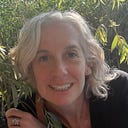Member-only story
How Coronavirus Is Fast-Tracking Medical Research
‘The thing that usually takes a year took one week.’
 The first Covid-19 cases arrived at Stanford’s hospital about two weeks ago, during the second week of March, mostly from the local community. “It’s a condition that has no known definitive treatment,” says Neera Ahuja, medical professor, hospitalist, and medical director of the general medicine inpatient wards at Stanford University. The trends from China suggested to Ahuja that within two weeks, the number of reported cases in Santa Clara County, where Stanford is located, could jump to 700. Like other doctors around the world, Ahuja and her team gave people with Covid-19 who were not showing signs of improving hydroxychloroquine, a malaria drug that had shown some benefit, through compassionate use, which allows people to take commercially available medications for critical situations where it may help.
The first Covid-19 cases arrived at Stanford’s hospital about two weeks ago, during the second week of March, mostly from the local community. “It’s a condition that has no known definitive treatment,” says Neera Ahuja, medical professor, hospitalist, and medical director of the general medicine inpatient wards at Stanford University. The trends from China suggested to Ahuja that within two weeks, the number of reported cases in Santa Clara County, where Stanford is located, could jump to 700. Like other doctors around the world, Ahuja and her team gave people with Covid-19 who were not showing signs of improving hydroxychloroquine, a malaria drug that had shown some benefit, through compassionate use, which allows people to take commercially available medications for critical situations where it may help.
But concrete evidence was entirely lacking. Like other doctors around the world, Ahuja found herself confronting an irony: No treatment options and an impending onslaught of patients were the ideal combination for experimental research. Starting a clinical trial at Stanford to study treatment options made sense; it was the only thing that did.

